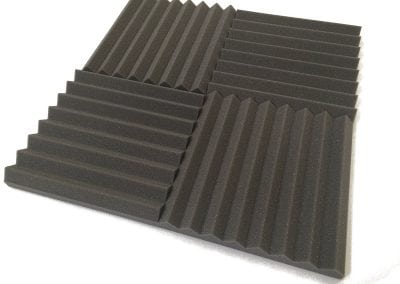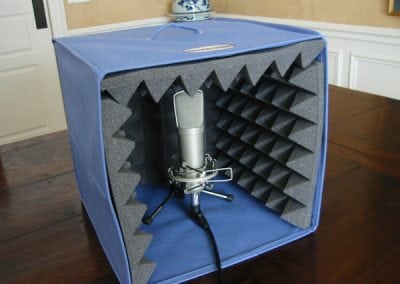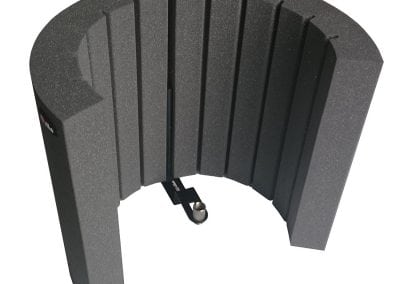While I’d like to write a comprehensive post reviewing this foam mic screen, you really need to hear the before and after results, so I’d encourage you to play the video embedded below.
Nevertheless, I’m happy to let you know why I bought it, what it is and does, and how I use it.
Why did I need this?
I recently bought a Blue Yeti microphone and it’s amazing, when compared to the cheap headset I was using previously. The issue I quickly found though, was my location. Sitting on a desk in the corner of the room, my voice reflects off the hard walls and desk surface, creating unwanted reverb in the recordings which I didn’t previously get from the headset – what with the mic being about 2 inches / 5 cm from my mouth.
The benefit of the Blue Yeti is that I can be a bit further way from the microphone – I’m typically less than 2 ft / 60 cm from it, and it’ll cope with loud exclamations and still pick up quiet whispers.

What were my options?
As I can’t do a lot about the room I’m recording in, I wanted to affect the sound in some way to improve it and reduce those echoes. My first thought was to buy some acoustic foam sheets* for the walls. But this is not only expensive, it also drastically alters the room and could potentially ruin the paintwork. So that was out.
Not wanting to spend too much money, I also looked on YouTube at home made solutions such as buying a single foam tile and cutting it up and sticking it in a box for the microphone to sit in. Certainly cheap, but it also looks pretty cheap, and in the sound tests, it actually made the voice much more bass heavy while eliminating a lot of treble. It did the job of removing reverb but at the cost of some quality.
Then I found the product I bought – the Acoustic Foam Mic Screen* from Amazon for about £30. Although this exact product isn’t available in the US, very similar alternatives are available* for similar prices.
I’m very pleased with this for the money. It’s not a great outlay (in the scheme of audio equipment expense) but on the practical side, it comes with a bracket for mounting this to a microphone stand or arm if you use one. I don’t. But I’ve put it away safely for when I do.
That bracket fits nicely into the pre-cut slot at either end of the screen and holds snug enough that you could mount this either way up (such as inverted on an arm) and the screen would hold just fine.
But for now, I’ve simply placed the screen on the desk surrounding the back of the microphone, between it and the corner of the desk/room.
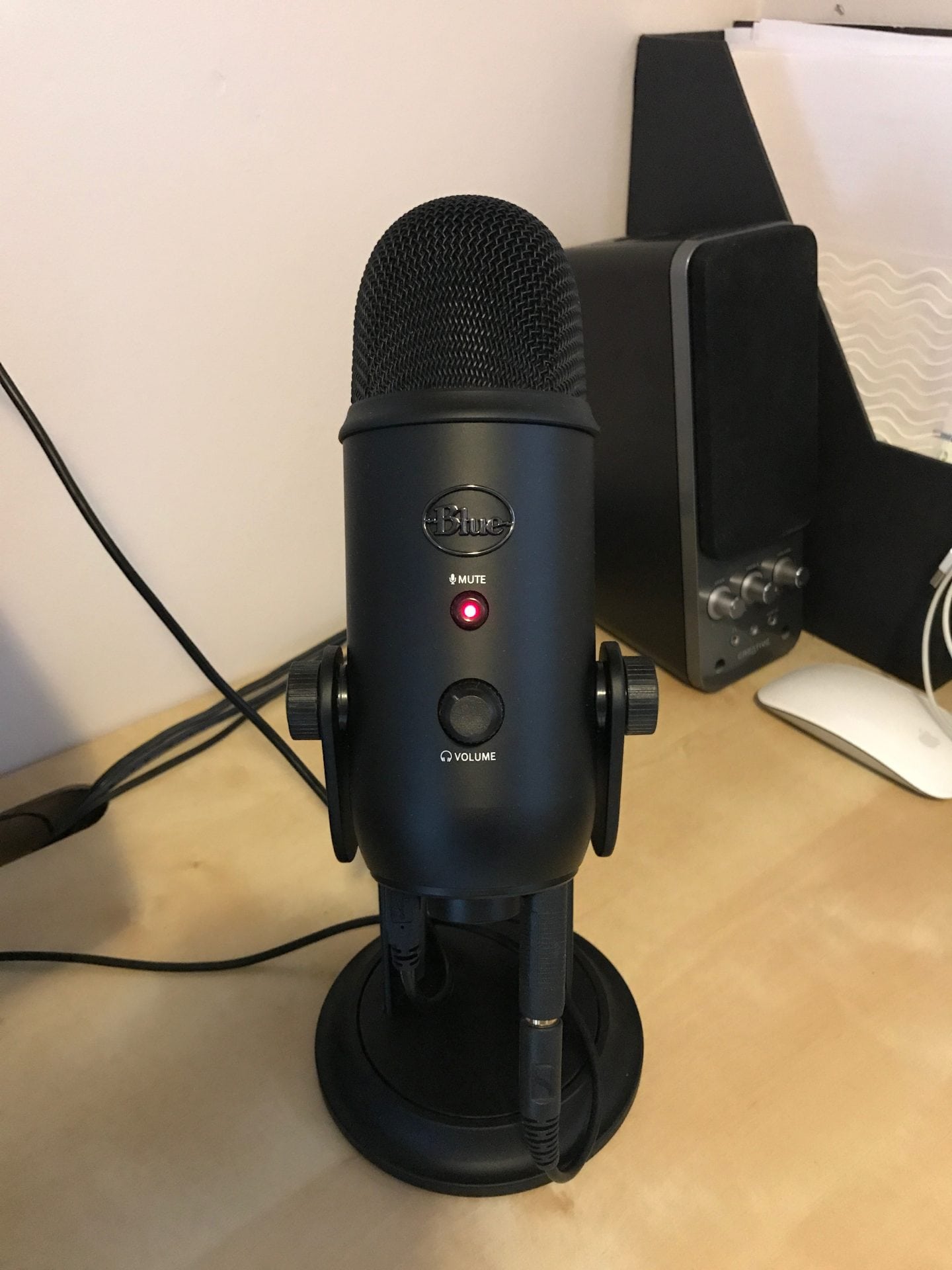
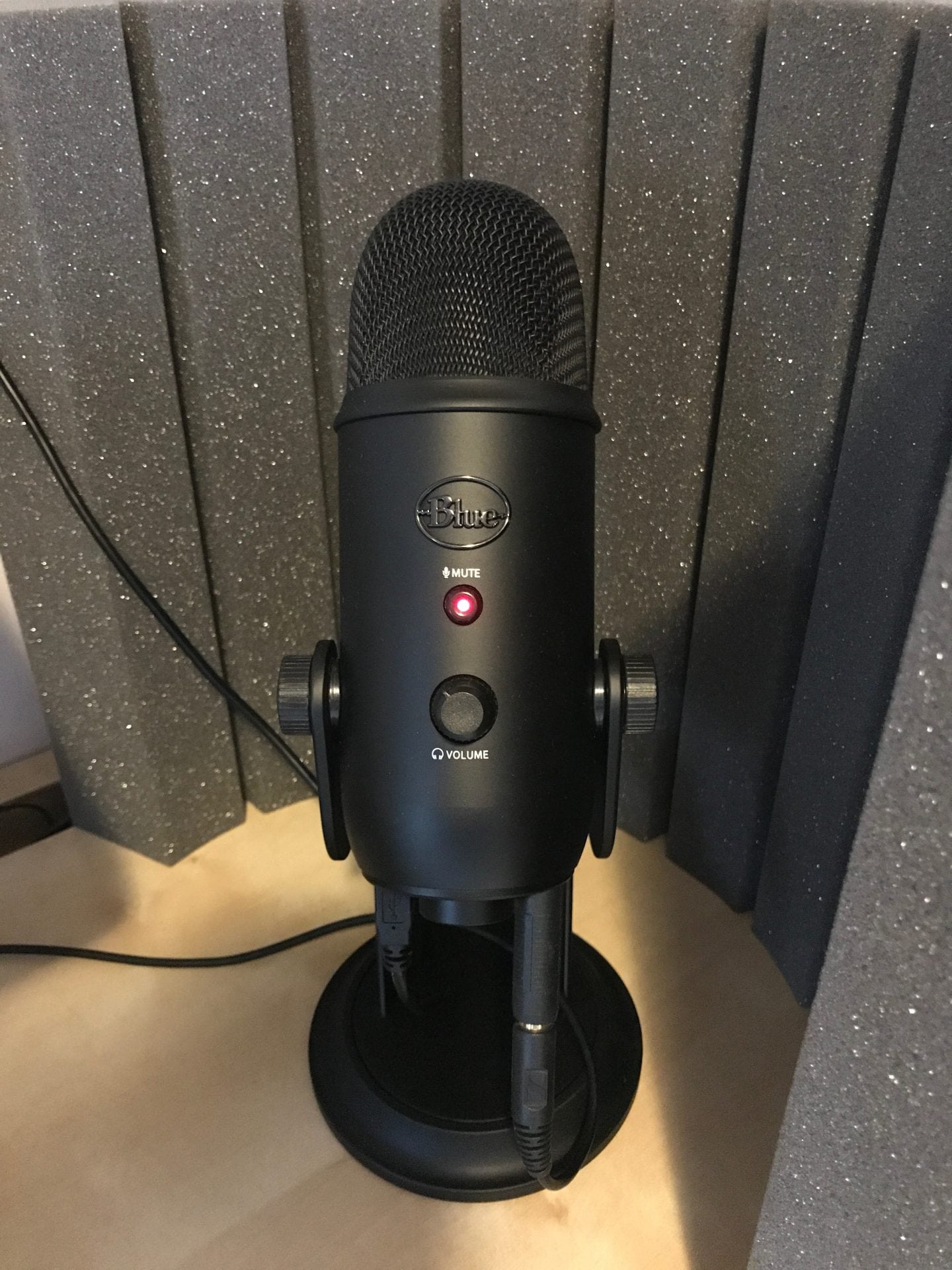
Testing
So in testing (please watch the video to hear what I’ll try and describe) I recorded the video from the desk using the Blue Yeti, but I was behind the camera about 1-1.5 metres (3-4.5 ft) from the microphone. While at that distance the mic picked up my voice with no problem whatsoever, the screen made pretty much no difference at all.
However in more realistic testing while recording gameplay at my normal distance and doing a separate sound test in the room both before and after placing the screen, I definitely noticed the difference.
With the screen placed behind the microphone, the echoes were reduced – if not removed completely – and my voice sounded a little fuller. Overall, I’m happy with this and I’d call this purchase a definite success!
One point I make in the video, where you can see the setup, is that I use the mic very near my laptop with a 50 cm cable, but this prevents me from wrapping the screen around the mic fully. I think I’ll buy a 1 metre cable to provide that extra flexibility in positioning the mic and screen, and I’m sure this will provide even better results.

Summary
If you’ve got a Blue Yeti or similar microphone you use at your computer and are near hard walls and reflective surfaces,you may be noticing some reverb in your recordings.
If this sounds like you – this will be £30 well spent to fix the problem, whether you place the screen on the desk like me, or are able to mount it to a stand or arm.
I’m very happy with this foam mic screen!
Buy this
You can buy this product on Amazon:
http://amzn.to/2uRihXs* (UK)
http://amzn.to/2vBw8PB* (US equivalent product)
What the * means above
If a link has an * by it, that means it is an affiliated link and therefore it helps this website earn money, as it is tracked to us. If you go through it, it can sometimes result in a payment or benefit to the site. It’s worth noting this means the third party used may be named on any credit agreements.
You shouldn’t notice any difference and the link will never negatively impact the product. Plus the things we write are NEVER impacted by these links. If it isn’t possible to get an affiliate link for a mentioned product, website or service, it is still included in exactly the same way, just with a non-paying link.
Duplicate links of the * links above for the sake of transparency, but this version doesn’t help LightwaveAl.com: Amazon.com (US), Amazon.co.uk (UK).

